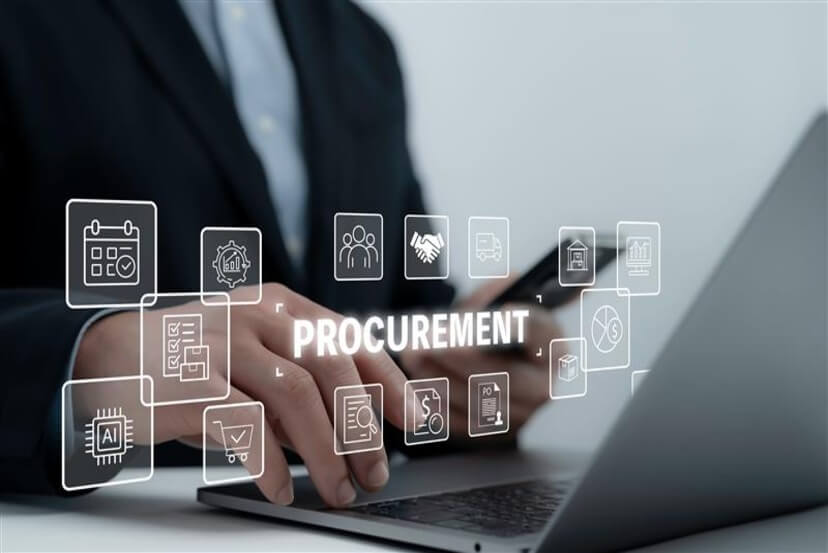Best Practices for CTOs to Implement Procurement Software Successfully

Best Practices for CTOs to Implement Procurement Software Successfully
Procurement software has emerged as a critical enabler of efficiency, transparency, and scalability in enterprise procurement.
As organizations continue to embrace digital transformation, Chief Technology Officers (CTOs) play a pivotal role in ensuring the successful deployment and integration of enterprise procurement software.
Implementing procurement technology isn’t just about plugging in a new tool—it requires thoughtful planning, cross-functional collaboration, and a clear roadmap to drive adoption and maximize ROI.
For CTOs tasked with leading this change, aligning procurement goals with IT strategy is essential.
In this article, we explore the best practices for CTOs to ensure the smooth implementation of digital procurement systems that deliver value and long-term impact.
1. Start with a Clear Business Case and Defined Objectives
Before any technology implementation, CTOs must work closely with procurement and finance teams to define clear goals and KPIs.
Is the aim of reducing maverick spending? Improve supplier visibility? Accelerate approval workflows?
A well-articulated business case provides direction and helps gain stakeholder buy-in across departments. It also sets the foundation for measuring success after implementation.
Key Tip: Quantify potential benefits such as time savings, error reduction, cost savings, or compliance improvement to support internal justification.
2. Choose the Right Procurement Software for Your Enterprise Needs
Not all procurement tools are created equal. CTOs should conduct a comprehensive evaluation of the organization’s needs—current and future—and select procurement software that aligns with both scale and complexity.
Factors to consider include:
- Cloud-based vs on-premises deployment
- Integration capability with existing ERPs, CRMs, and finance systems
- Customizability and scalability
- Supplier management and analytics features
- Compliance and audit trail functions
Key Tip: Prioritize solutions with robust APIs and modular architecture to future-proof your digital procurement stack.
3. Involve Cross-Functional Stakeholders from Day One
Implementing enterprise procurement software isn’t just an IT project—it’s an organization-wide initiative.
Procurement, finance, operations, and compliance teams all have vested interests in how the tool functions.
CTOs should bring stakeholders into the planning process early to:
- Collect detailed requirements
- Identify pain points in current workflows
- Set realistic timelines and milestones
- Ensure user-centric design and training readiness
Key Tip: Form a steering committee with representatives from each department to ensure alignment and accountability.
4. Ensure Seamless Data Migration and System Integration
A major hurdle in digital procurement adoption is the challenge of migrating legacy data and ensuring integration with existing business systems.
Clean, structured, and deduplicated data is essential for the success of the new system.CTOs must coordinate a robust data migration strategy that includes:
- Cleansing vendor master data
- Mapping chart of accounts
- Validating purchase history
- Creating automated data sync between systems
Key Tip: Conduct trial migrations in a sandbox environment to identify and correct errors before full-scale deployment.
5. Prioritize User Experience and Training
Even the most advanced procurement software can fail if end-users resist adoption. CTOs must advocate for a simple, intuitive user interface that minimizes friction.
Equally important is investing in a structured training program tailored to different user roles—buyers, approvers, finance teams, etc.
Consider a blend of live demos, video tutorials, helpdesk support, and user manuals.
Key Tip: Collect feedback during the pilot phase to refine user experience and address concerns early.
6. Leverage Automation and AI for Procurement Efficiency
Modern procurement platforms offer built-in automation and AI capabilities that help organizations eliminate repetitive tasks, gain predictive insights, and improve compliance.
CTOs should work with procurement leaders to implement:
- Automated approval workflows
- Intelligent purchase order generation
- Supplier performance dashboards
- Spend analytics and risk alerts
Key Tip: Start small—automate one or two processes first, then scale based on ROI and ease of adoption.
7. Monitor Performance and Optimize Continuously
Once the software is live, the journey doesn’t end. CTOs must collaborate with procurement teams to track performance metrics and optimize processes continuously.
Important KPIs to monitor include:
- Purchase order cycle time
- Cost per transaction
- Contract compliance rates
- Supplier satisfaction and SLA adherence
- User adoption rates
Key Tip: Set up quarterly reviews to evaluate system performance, user feedback, and emerging needs.
8. Ensure Robust Security and Compliance
As procurement systems handle sensitive vendor, pricing, and payment information, ensuring data security and regulatory compliance is a must.
CTOs should ensure the procurement software adheres to:
- Role-based access controls
- GDPR and regional data laws
- Secure audit trails
- Regular vulnerability assessments
Key Tip: Work closely with your cybersecurity team and software vendor to conduct periodic security audits.
CTOs as Enablers of Procurement Innovation
CTOs are uniquely positioned to bridge the gap between technology and business value.
By adopting a strategic, stakeholder-driven approach to procurement software implementation, CTOs can accelerate digital transformation and enable procurement to become a proactive, insight-driven function.
The benefits of successful procurement software deployment are clear—greater transparency, cost savings, better compliance, and enhanced collaboration across the supply chain.
Ready to transform your procurement operations with cutting-edge technology?
Mail your inquiries to emea@moglixbusiness.com or connect with our team at: https://business.moglix.ae/contact-us/
The ever-evolving landscape of supply chain trends

The ever-evolving landscape of supply chain trends
Businesses have not remained immune to the waves of challenges brought forth by the pandemic. Across sector lines and international boundaries, organizations have had to innovate to survive the new normal and, eventually, thrive.
The New Normal
From supply chain constraints to repeated halts in operations, businesses have had to contend with an array of bottlenecks during this unprecedented time ridden with a global pandemic and the war in Ukraine. One of the major trends to emerge has been organizations’ increasing reliance on technology and digital procurement.
Since every link in the value chain has been adversely affected due to a host of reasons, including supply-side shortages, demand-side stagnation, and a general environment of uncertainty, the path to recovery has been forged with equal parts resilience and restraint.
Upcoming Supply Chain Trends for 2022
Due to the dynamic nature of the supply chain, the trends are ever-evolving and hence unpredictable. However, here are some of the key supply chain trends that surfaced in 2021 and are expected to stay true in 2022:
Widening the value chain basket: One of the main learnings for organizations during the pandemic is the lacunae caused by overreliance on one or two supply chain partners. Businesses are increasingly putting their eggs in different baskets by collaborating with a wider range of suppliers, marketers, and distributors. Though this means increased business coordinations, negotiations etc. across the value chain, organizations that enable seamless digital procurement have come to the industries rescue through their ability consolidate scattered vendor base on a single platform
1. Technology and automation to the rescue: In the wake of the pandemic, businesses are emphasizing leveraging technology to achieve higher accuracy in demand forecasting, production planning, and marketing strategy. Artificial Intelligence and Machine Learning are increasingly being applied to ensure minimal disruptions in the supply chain. Data generated with the help of these emerging technologies are being constantly employed to identify potential areas of growth in business.
2. Building resilience against the global logistics disruption: The widespread disruption of the global logistics chain has caused businesses severe headaches and compelled them to build resilience to production delays, raw material shortfalls, and extremely volatile demand trends. This has driven a drastic restructuring of the supply chain for the better.
3. Supply Chain Trends in the UAE
Being a key member of the GCC, the UAE has robust free trade associations with several countries. In addition to this, the country has bilateral trade agreements with India, The Netherlands, etc. Recently, UAE announced its intention to deepen its ties with growing economies. Some of its business negotiations with countries like India, Turkey, and Indonesia seem to indicate a positive trend in this direction.
Some of the recent supply chain trends in the الإمارات العربية المتحدة are:
- A rise in the prominence of e-commerce and related logistics
- Growth of the pharmaceutical sector
- Easing of duties on import-exports
- Growth of bilateral agreements for trade
The Foreign Trade Ministry of UAE feels that these trade pacts are bound to increase foreign direct investment and enhance business growth in terms of volumes.
Choose Moglix To Stay Ahead of the Curve
The outlook for the UAE logistics market seems to hint at a robust 6.5% CAGR projection for the period of 2022-2027. With supply chain trends picking up pace in what we see as a potential post-pandemic world, it is important for businesses to stay ahead of the curve in order to maximize value.
If you are looking to transform your supply chain and focus on digital procurement, Moglix can help you stay ahead of the curve. We aim to optimize strategic procurement and bring in supply chain efficiency for organizations across various sectors, including manufacturing, infrastructure, and Oil and Gas in the UAE.
Equipped with what is said to be future facing technology and dynamic capabilities such as Integrated Procurement Solutions, Automated Workflows, and Catalog-Based Buying, Moglix ensures that you can take your organization’s operations to the next level by enhancing efficiency and maximizing cost-effectiveness. Visit our website to know more.
A Day in the Life of a Procurement Maverick

A Day in the Life of a Procurement Maverick
Has this ever happened to you?
Procurement Manager (PM): Why did you not use our system to finish the order?
Procurement Executive (PE): I felt we could speak to the supplier directly, and process the order manually – it would save us some money, and I saved us 50% in this case.
PM: Well, that would be good if we did not spend over 3x trying to save that 50%.
PE: OOPS!
Purchasing from vendors outside of established procurement policies is known as maverick spending. Off-contract spending or purchasing from non-preferred vendors are examples of maverick spending. Maverick spending accounts for anything from 25% to 80% of overall spending across all types of enterprises. These purchases may not have been made on purpose; some may have been made due to real errors or a lack of information. Maverick spending means you won’t be able to take advantage of the deals and discounts you worked so hard to secure. Maverick spending is small leakage from negotiated supplier contracts at best, and unrestrained, rebellious purchasing at worst.
Spend analytics and transactional purchasing system providers tout the reduction in maverick spending as a benefit of their products. In practice, maverick spending reduces the value of predicted sourcing benefits and may erode contracted suppliers’ trust in the buyer’s volume projections. While some ‘maverick spending’ is motivated by ignorance or rogue decision-makers, some stakeholders choose not to use preferred providers for valid reasons and knowing why ‘maverick purchasing’ occurs can provide useful insight into what stakeholders require and why.
How Do You Identify and Help the Maverick?
Enable Visibility into Spend Analytics
The ability to see where your money goes is crucial. After all, what you can’t see can’t be saved or fixed. Do you have any idea how much maverick spending costs your business? Or the non-conformity-prone job areas and budget categories? A thorough expenditure analysis can assist you in identifying gaps in all sources of spend data. You may then determine who, what, and where the problem is and devise a strategy to address it.
Enable Transition from Offline to Online Procurement
The majority of employees do not “go rogue” on purpose or with malice in their hearts. They may simply be unaware of the procurement procedure. Alternatively, people may find it inconvenient and time-consuming. Automation software can be daunting to staff who haven’t used it before. They may also notice lower pricing elsewhere, not realizing the costs of invoice and payment processing, as well as expenditure reimbursement. Regular efforts to explain the “why” and convey the value can go a long way toward garnering buy-in, whatever the cause. Consider organizing (bring your own) lunch and learn sessions, rewarding excellent department or individual successes, and allowing employees to propose vendors and provide feedback.
Choose a User Friendly Digital Procurement Solution
If you’re having trouble with your procurement process, consider using a more user-friendly alternative. On the market, there are numerous automated eProcurement systems that are both economical and simple to use. The goal is to choose a solution that is simple to use and all-encompassing (i.e., it tracks all direct and indirect spending) and interacts with your ERP system. This guarantees that all employees have timely access to the correct information.
Seek Feedback from Your Procurement Team for Continuous Improvement
Organizations are susceptible to procurement mavericks. A well-managed budget, planned procurement workflows, and improved departmental skills will assist organizations in successfully managing their spending and executing processes. In the end, noncompliance with procurement laws and maverick spending costs businesses a lot of money. You’ll gain a greater understanding of why maverick spending occurs, where it occurs most frequently, and, most critically, what solutions you should take to stop it by delving deeper into the purchasing experience and the obstacles and frustrations your employees face.
How Can Your Business Move Away from Maverick Procurement?
Data available from a large EPC company that employs 5000 procurement professionals shows that a switch from maverick spending to procurement automation has resulted in 80% time savings on the purchase requisition to purchase order cycle. To learn how your business can unlock new avenues of efficiency by moving away from maverick procurement to an integrated digital procurement solution, click here

